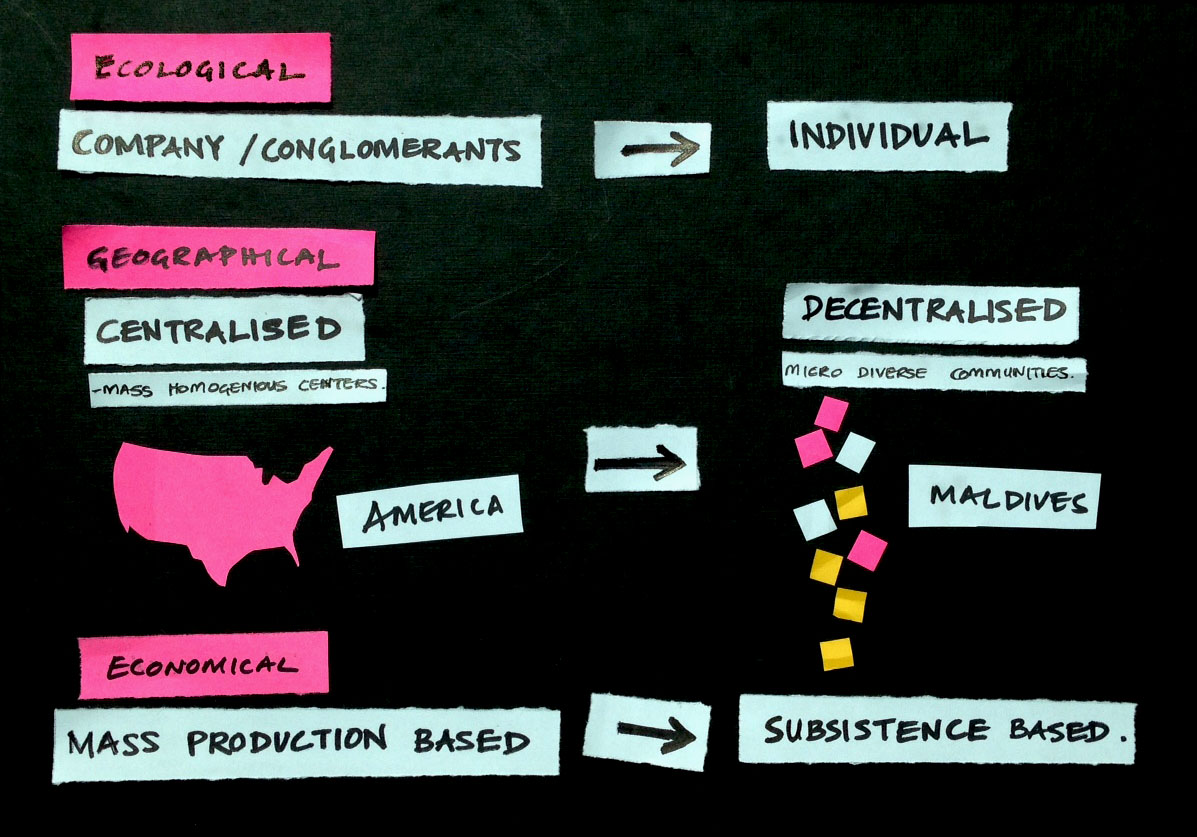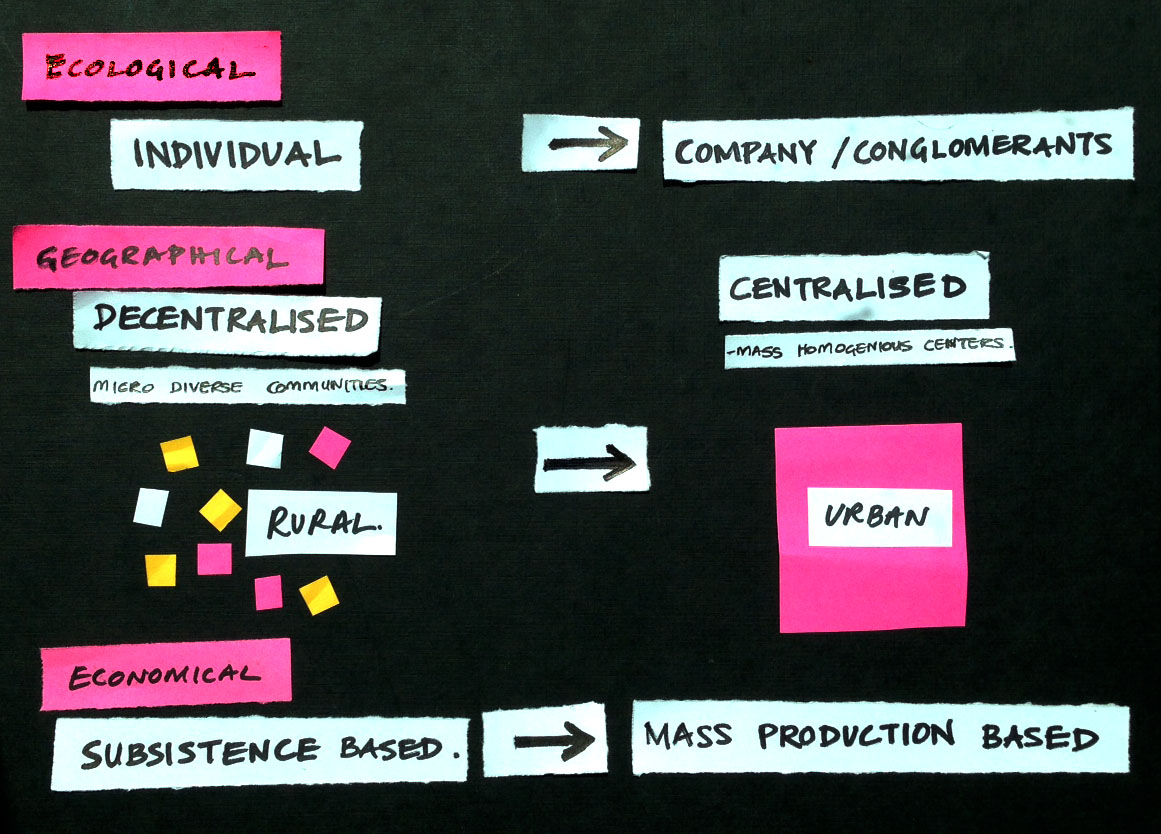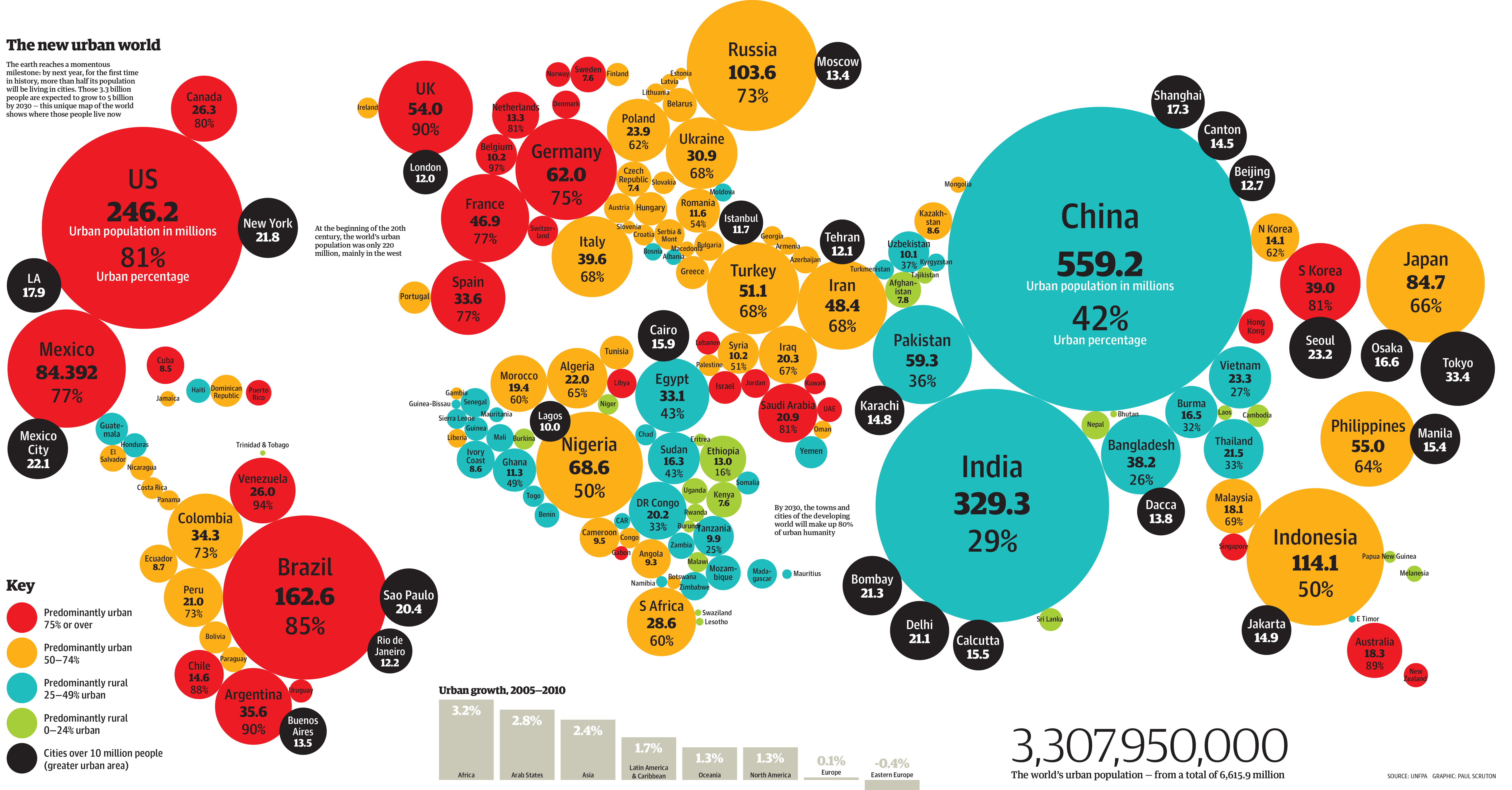The Shifting Scale of Economics.
… and the evolution of the “Maldivian Dream”
We have been led to believe that economic success has always been dictated by the scale of the population you are able to reach. This is applicable at every level, from individual to companies to countries. Within an individual level, trading your surplus produce, with your neighbors, was what shaped the conventional economic models that our livelihood is based on, built around the idea of specialization and division of labor. The individual evolved from subsistence livelihood, and formed companies or corporations, extending the scale of production, and with it, the need to reach further geographically, hence the beginning of what we now know as the industrial revolution. Large volume of people were required to concentrate within close proximity to reduce the cost of production, as well as develop the necessary homogenous markets for what was being produced, in order that wealth can be amassed in volume. Turn of the 20th Century saw centralization of mass populous groups into clusters and the formation of standardized urban spaces, more familiarly known as cities.
figure 1: The Rural to Urban transformation during Industrial Revolution.
Volume became king, and production dictated what was to be consumed. Henry Ford famous phrase, “You can have any car you want as long its black” (paraphrased)*, epitomized the idea that high volume of production was the predominate force that dictated consumer needs. Basically to be able to afford and consume, you would have to need, and make more of the same thing. Hence, cities became the structure that can bring together the workforce required for cost effective production and consumption at mass (high volume) within close proximity of each other. This became the principal by which world economy flourished up to very recently.
Image taken from the Guardian Newspaper Online- http://image.guardian.co.uk/sys-files/Guardian/documents/2007/06/27/URBAN_WORLD_2806.pdf
If you look at the geography of the world, large landmass, with highest concentration of people, were the most economically prosperous, due to their ability to produce and consume at close proximity. America, usually taken as a symbol of modern economic superpower, personified this idea. This perception was the norm, until recently, when in 2008, world economy went in to recession.
What we saw was the result of our failure, or rather our inability to incorporate new economic structures, or formulate new economic models in pace with the technological innovations, which was redefining our preconceived idea of space, volume and time, hence distribution of power within society as a whole. With the advent of the Internet, all boundaries imposed by our physical reality, had to be reconfigured, and a new virtual reality modeled upon the impression of individualistic empowerment had to been born. Perfect competition was no longer a myth, or a benchmark, as relegated within the physical reality, but an actual experience in its own right, albeit somewhat virtual.
This has meant that the scale of the market or scale of the production was no longer the determining factor for economic prosperity. Volume had ceased to be king, and new economic society less reliant on physical scale/ or distance was being formed.

figure 2: The Transformation from Urban to Micro Communities (Virtual & Physical) post- Internet Revolution
Therefore like America, which as a geographical space personified the postindustrial economy of abundance and plenty (The American Dream), a new geographical physical space, has to be identified, which characterize the post Internet/ or knowledge-based economy. If by virtue of its immense scale and concentration of people in close proximity (critical mass), America symbolized the prosperity gained from economies of scale, it can be argued, a new type of land mass totally contrary to it, must symbolize the opportunities offered by negation of these same virtues, i.e. diseconomies of scale. This landmass I argue is the Maldives, a country composed of dispersed group of isolated island communities, a country taken as a whole, so insignificant in scale, that it hardly exist on the world map. Maldives is the physical embodiment of how Internet can reshape society and the economic landscape. Through the opportunities offered by the Internet we are able to revert back to a more decentralized/ subsistence state of our origin, where economic value is no longer found in the volume of homogenous production & consumption, but is in our ability to create diverse & meaningful interactions, between every individual producer and consumer. As Maldives was never geographically in a position to take advantage of economies of scale, due to naturally imposed limitations of physical mobility & human resources, it is perfectly placed to take advantage of diseconomies of scale presented by the current economic condition.
But first we need to ignore what we are being taught and continue to have faith in our own capacity to learn from ourselves, our immediate situation and environment, to take advantage of opportunities as its presents itself. We can’t afford to look back at economic models of the past, as reference to guide us on how we should move forward, it will only mislead us into believing in our own inadequacies. We could be better off looking at where we are at present, and see how we could make the most of it now, to take us into a brighter future.
….and have a listen to the song, produced as part of the MDP Mini Manifesto for Higher Eductation (Dhivehi Ilmuverin: Dhivehinge Visnun Raajege Asdhadin Beyrah.) Words by Ahmed Naseer/ Music by Haaburi: BUHDHI

